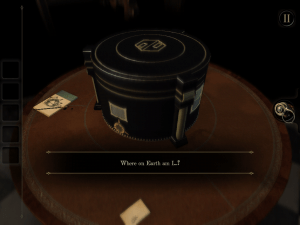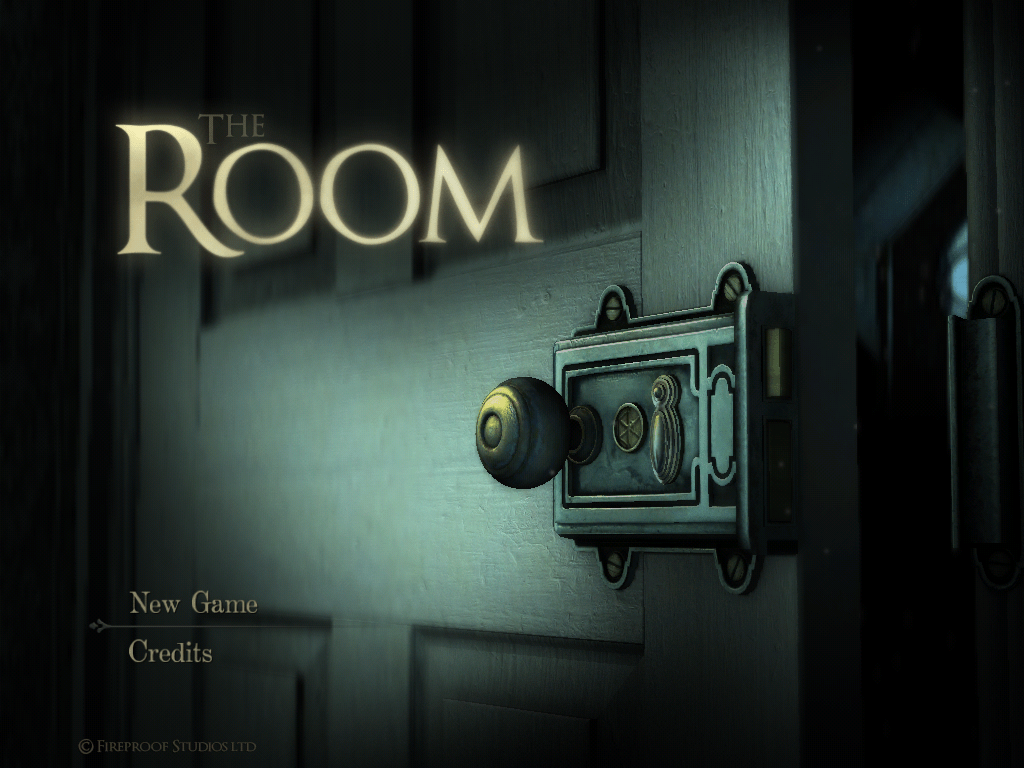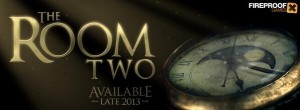Interesting Interviews
If you’ve been following Nardio, you’ll know that we are totally in love with Fireproof Studio’s game The Room. We love a good puzzle game and this one definitely delivered. We were pretty excited when they accepted our request for an interview so that we could get a look at the genius behind this development studio. For those who are eager to learn more about The Room 2, read until the end to learn the potential release date! Thank you Barry Mead and Fireproof Studios for the interview.
What is the story behind the name Fire Proof Studios? Can you tell us a little bit about your team? How many core members? How long have you known each other? What brought you all together?
Fireproof Studios was founded in 2008 by six of us who were the art leads from EA/Criterion Games ‘Black’ and the Burnout series. We decided to leave EA in order to keep a highly functional team together – we collaborated very well and had already been through the wars as a unit so it seemed very natural to stick together and start another battle on our own. Since early 2009 we have been an art outsourcing team based in Guildford UK and have worked on some fab projects such as Killzone, Blur, Little Big Planet and many others. Then in 2012 we made our own game called The Room and bugger us if it didn’t go to #1 on Apples app store.
What would you look for in new team members?
 Well firstly they have to love playing games. There are a lot of people in the industry who like making games but don’t actually play many of them, whereas we think its important to be a fan of videogames in whatever form they come in. Secondly they have to be very good at their job for their experience level, be they noobs or veterans. Thirdly, we would hope that they are laid back people who are self-motivated and don’t need much oversight to get on with their jobs.
Well firstly they have to love playing games. There are a lot of people in the industry who like making games but don’t actually play many of them, whereas we think its important to be a fan of videogames in whatever form they come in. Secondly they have to be very good at their job for their experience level, be they noobs or veterans. Thirdly, we would hope that they are laid back people who are self-motivated and don’t need much oversight to get on with their jobs.
Can you tell us a bit about your background?
My career started in Dublin, Ireland in 1992 working on health related ‘edutainment’ titles for SNES, AMIGA and PC. In early 1994 I moved to the UK to join Bullfrog Productions Ltd. where I spent his time as a lead designer and artist/animator on titles such as Magic Carpet 1 & 2, Syndicate Wars, Dungeon Keeper and many others. Over the next ten years I worked for various studios as a game designer (Acclaim Teeside, Negative Productions, Mucky Foot) before rebooting my career in 2003 to become an artist once again. I was hired as a character artist by Criterion Studios in 2004 working on BLACK and subsequently Burnouts 3, 4 and Paradise. In 2008 myself and five friends left Criterion to form Fireproof Studios, an award-winning outsource studio. Fireproof released our first game, The Room, on iPad in September 2012.
What inspired you to jump into the gaming industry?
I got a lucky break – In 1992 in Dublin, Ireland I was a student and landed a summer job at an educational games company, doing animation and graphics. I liked it so much I quit college to do it full time. In 1994 I then got a job in Bullfrog Productions in Guildford, UK and that’s when my real career started.
What advice would you give to someone wanting to get into the gaming industry?
 There are many roads into the industry but I like to think the simplest route is the best: love what you do and be productive. Don’t wait for someone to hand you a job – start working on games in your spare time, hook up with others, make something cool that shows off what you can do whether you are an artist, programmer, designer etc. It’s very tough to get a break so doing something on your own will set you apart from most rival candidates. Secondly, learn your craft. Spend time honing your skills. Understand why popular games sell and others don’t. Above all else, improve – don’t ever be satisfied with your work as is – do all you can to make it better with every attempt and honestly & appraise whether it’s any good. If it’s not, do it again, then again. Other than that, be humble and be nice 🙂 Nobody wants a hard-ass on their team.
There are many roads into the industry but I like to think the simplest route is the best: love what you do and be productive. Don’t wait for someone to hand you a job – start working on games in your spare time, hook up with others, make something cool that shows off what you can do whether you are an artist, programmer, designer etc. It’s very tough to get a break so doing something on your own will set you apart from most rival candidates. Secondly, learn your craft. Spend time honing your skills. Understand why popular games sell and others don’t. Above all else, improve – don’t ever be satisfied with your work as is – do all you can to make it better with every attempt and honestly & appraise whether it’s any good. If it’s not, do it again, then again. Other than that, be humble and be nice 🙂 Nobody wants a hard-ass on their team.
What was the inspiration for The Room?
A few things – the touch interface for iPad being a main one. We thought touch control would work well with a game based on Chinese puzzle boxes, but we also like the Lament Configuration puzzle from the horror movie ‘Hellraiser’. So it was a fusion of those ideas really.
What is the most challenging part of making a new game?
That’s very hard to say as games come in so many different forms, each with their own weird problems. I suppose coming up with an idea that everybody on a team thinks will work is very difficult. We got lucky in that we treated The Room as an experiment to see if we could make a game, and I think that really helped in the end as we didn’t agonise too much over the financial viability of it too much, and I think that relaxed mindset when you make a game comes across when people play it.
Can you explain your process of making a game?
Well given that we’ve only released one game, I’m not sure we have a process yet! But we have a very practical, off-the-cuff approach to what we do, we honestly don’t agonise over it too much and pretty much intuit our way through development without much in the way of design documents or meetings etc. We know whether our game is any good simply by playing it so if an idea makes sense we just go for it and only think twice if it turns out not to work. So far we have avoided making games with characters and heavy plots, so I think if we ever do that our approach will have to change as that involves a lot more in the way of planning, writing, preparation etc.
What programs do you use to make your games?
We use Unity as our engine and 3ds MAX / photoshop to create all our assets, plus various other plug-ins and smaller bits of software.
Are you worried about other developers cloning your work?
Yes and no. I’ve always expected that if our game became a hit it would get copied in some form or another. 12 months later it hasn’t happened yet so who knows, maybe people can’t be bothered as a lot of what makes The Room work is the high detailed 3D graphics and well polished controls, and that all takes time and expertise to do. If we were a free-to-play game (i.e. if we were making much more money) I’m sure it would be more likely that The Room was copied. But our sales are modest in comparison to the top grossing games on mobile so maybe that helps us get overlooked by the copyists.
Can you explain your thoughts on in-app purchases?
We find them annoying mainly because we’re trying to make immersive games and so having pop-up requesters appear in the game breaks the fourth wall and pulls the player from the head-space we’re trying to create. So we don’t use them.
What apps do you enjoy playing?
Personally I like strategy games but I’ll try pretty much anything that’s well made or original.
How do you see the world of App development evolving?
Who’s to say? I have no idea. I always saw mobile as a great platform for no-bullshit gaming but the rest of the industry doesn’t see it as that so much. These days as far as developers and publishers are concerned there’s an insistence that games on mobile must be casual, free to play titles but I just have no interest in that idea, nobody in Fireproof wants to make those games. We like meaty, playable, immersive experiences and as we see it the mobile platform is what we make it, so we’re making it in our own fashion, hoping to appeal to gamers who also like what we like.
Can you give us some spoilers on The Room 2?
No spoilers, for a puzzle game that would be blasphemous 😛 We are trying hard to make the game weightier, longer and better made than the first one and so that’s what we are concentrating on doing. We hope to have it out in December this year.
Thank you Barry Meade and the fine people at Fireproof Studios for this amazing insight into your team. Be sure to download The Room on iTunes and check out The Room 2 when it becomes available.






